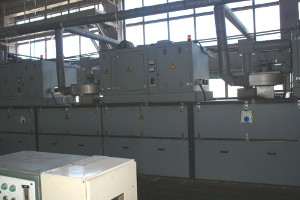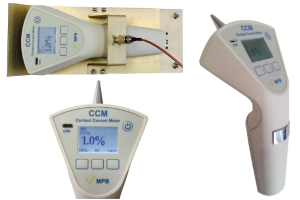In the workplace, as well as in the world we live in, the electric and magnetic fields are always present. They can have a natural (electrostatic charge, terrestrial magnetism) or artificial (electrical equipment or systems of distribution of electricity) origin. The industrial development and the use of advanced technology has, in recent years, produced a considerable increase of artificial electromagnetic fields. It is therefore necessary to study their effects and regulate their exposure to protect the health of workers and the general public.

Thanks to studies made by ICNIRP (International Commission on Non-Ionizing Radiation Protection) and based on the most authoritative scientific results in the world, it has been possible to elaborate of guidelines for the exposure to electromagnetic fields, in order to avoid damages to human health from electromagnetic pollution. The standard references for the workplace safety, 2004/40/EU, 2008/46/EC and the latest 2013/35/EU , provide rules for the exposure to electromagnetic fields in accordance with the ICNIRP guidelines.
One of the parameters to measure, according to the current regulations on the minimum health and safety requirements, regarding the exposure of workers, is the value of the contact current.
A device with the metallic casing, immersed in an electromagnetic field, can accumulate electric charges. . If you come into contact with this device without adequate protection, the electric charges accumulated by the device may discharge to the ground, flowing through the limbs and the body. In this case, the electrical charges on the device (which is immersed in the electric field), generate a current through the limbs and a contact current through the operator's body. Even an electric machinery not properly shielded (see also electromagnetic shielding) emits electromagnetic waves, so the contact whithout adeguate protection also produce the flowing of electromagnetic waves through the limbs and the body of the operator, generating a contact current.

The department of research and development of MPB, to allow the measurement of the contact current and protect the worker exposed to risks, created the CCM (Contact Current Meter). Through using this meter you can, in total safety, find the value of the contact, a measure required by the 2013/35/EU regulations.
The CCM allows to me the value of the contact current in two modes:
-ground (GP)
-hand (HAND)
The ground method follows the EN 50475 CENELEC (European Committee for Electrotechnical
Standardization) standard. This states that, for the first measure, it is necessary to measure the contact current using the body simulator impedance and it is not possible to make a measurement with the direct contact of the human
body.
The hand mode, after making sure that the level of the current is not dangerous, allows the measurement of the contact current through the interposition of the human body, and therefore through with the variable impedance of
the operator who perform the measurement.
The measure that you can get with the CCM is the contact current value expressed in mA or a percentage of the value of the regulation for workers and general public.
With this meter you can easily check contact currents on industrial machinery that work in radio frequency ranges from 40 Hz to 110 MHz, always making sure to follow the rules of European security (see also safety at work).
For more information, please see the technical specifications.